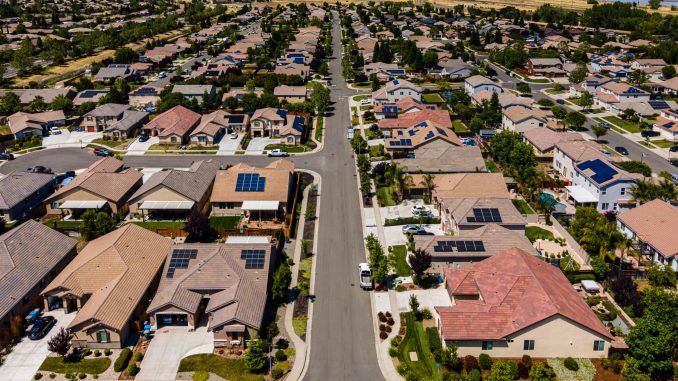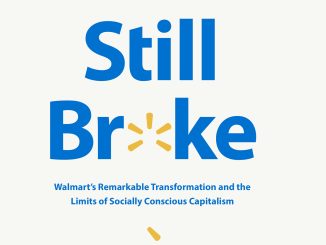
This story is produced by the award-winning journalism nonprofit Capital & Main and co-published here with permission.
Rising inflation is taking a toll on most Americans, none more severely than lower income workers and families who were already struggling to stay afloat. Because these workers spend a greater percentage of their earnings on the basics, the skyrocketing cost of things like food and fuel make them especially vulnerable to financial crisis.
But almost nowhere is the impact more pronounced than in housing. And the inflationary cycle in the U.S. is widening an already sizable gulf in homeownership between higher and lower income workers—a trend with ominous future consequences in every state, but especially housing-crunched California.
A recent report from the National Association of Realtors brings all of this into close focus. In its annual update of homebuying statistics across the country, the report sized up the dominant current demographic succinctly: older, white and wealthy. And it’s not those buyers’ first forays into real estate, either.
In fact, the share of first-time buyers in the market during the survey period (July 2021 through June 2022) dropped to just 26 percent, the lowest figure since the association began issuing the report 41 years ago. The typical first-time buyer was 36 years old, an all-time high; the average age of repeat homebuyers was 59, also a record.
White buyers made up 88 percent of all home sales during the survey period, a 25-year high. The percentage of Latino or Hispanic buyers moved up slightly, but Blacks and Asian Americans/Pacific Islanders saw their homebuying numbers dwindle.
The financial hurdles to homeownership appear more daunting than ever. Although 78 percent of buyers financed their purchases, that figure was down almost 10 percent from the previous survey, indicating a rise in all-cash transactions. (More than a quarter of repeat buyers paid all cash for their new homes.) Among those who financed, nearly half said the source of their down payment was their savings, a notion that is nearly inconceivable to the millions of lower income workers whose savings are minimal if they exist at all.
In California, those trends, combined with escalating rents, form a high barrier to homeownership, which experts say is, for many families, the No. 1 source of generational wealth and wealth building.
“Combined with rising home prices and interest rates, owning a home has become harder to afford over the past year, even as many saw growth in wages,” write Marisol Cuellar Mejia, Hans Johnson and Julien Lafortune of the Public Policy Institute of California (PPIC). “Given the disproportionate impact of the COVID-19 pandemic on households of color, disparities in homeownership are expected to widen.”
Pandemic aid that included financial relief temporarily reduced income inequality in the state, but that aid has long since ended. Most COVID-related rent control and eviction protections also have concluded, with many rents headed for 5 percent to 10 percent bumps. Even for lower income workers who saw modest increases in their wages over the past year, that combination of factors means homeownership may be further away than ever.
Opportunity cost
According to research by the nonpartisan Brookings Institution, middle income households in the U.S. have relied upon homeownership since the mid-20th century as a strategy to build wealth. For most in this group, home equity is the largest financial asset.
Though imperfect and subject to market fluctuation, home equity remains a powerful tool not only to build wealth, but to hand it off to future generations. Yet the PPIC’s research finds that despite pre-pandemic gains, the racial gap in homeownership in California remains vast.
In 2019, the Latino homeownership rate in the state stood at 44.1 percent, with the rate for Black residents at 36.8 percent. For whites, the rate of ownership was 63.2 percent. The financial effects and aftereffects of the pandemic, however, are likely to depress the numbers for Black and Latino households—and there’s a deleterious long-term cost associated with that.
“It’s staggering what someone can lose out on when it comes to housing wealth,” Jessica Lautz of the National Association of Realtors told the New York Times. Lautz, vice president of demographics and behavioral insights for the association, said a typical homeowner has gained $210,000 in equity over the past decade.
For California homeowners, the effect is even more pronounced. According to a 2021 report by the financial and property analyst CoreLogic, those who owned homes there experienced a $116,000 run-up in equity over the prior year alone.
Such equity provides a huge security blanket in times of financial crisis, since it can be tapped in the event of a sudden job loss or unexpected money emergency. It’s nothing but a theory, though, unless a house can be purchased in the first place.
The PPIC’s authors suggest that policymakers focus on the kinds of structural barriers that often stand between lower income families and the chance to buy a house in California—by, for example, increasing support for small-dollar mortgage loan programs, allowing first-time buyers to qualify more easily for lower-value homes.
A recent decision by the federal Fannie Mae program may also help. It allows underwriters to consider an applicant’s rental history, which the authors say “may provide additional benefit to borrowers of color with no or limited credit histories.” And meaningfully addressing California’s longstanding housing shortage, an issue that has been kicked down the road for decades, would provide relief for workers who fear constant rent hikes and house prices that sail out of the sight of would-be buyers.
In the midst of the current inflationary cycle, the squeeze is on California renters who have to grind to get from month to month, and the notion that some of them might become homeowners could seem distant. But it is a critical path to the kind of wealth-building that can change the landscape for future generations. In a state whose political leaders constantly sound the theme of equality, few other paths are so obvious—and so clearly crying out for action.




Be the first to comment